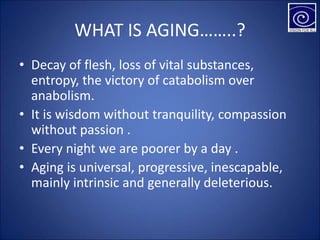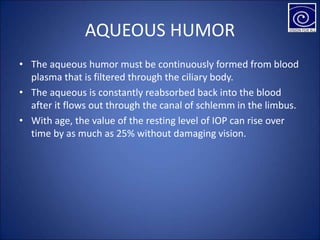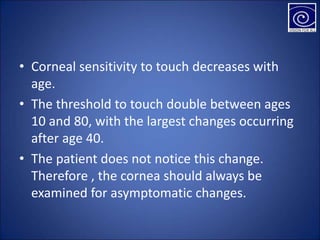- Aging causes many changes to the structures of the eye that can affect vision and eye comfort. These include yellowing of the sclera, decreased tear production, hardening and clouding of the lens, thinning of the vitreous humor, and loss of peripheral vision. However, central vision can typically be maintained with correction.
- Common age-related visual changes are presbyopia requiring reading glasses, decreased contrast sensitivity and dark adaptation, increased floaters, and reduced color discrimination especially of blues. These changes are usually not medically significant.
- Eye discomfort from dryness or strain may occur but headaches should be evaluated, as in elderly they could signal an ocular emergency like acute glaucoma needing prompt



























































